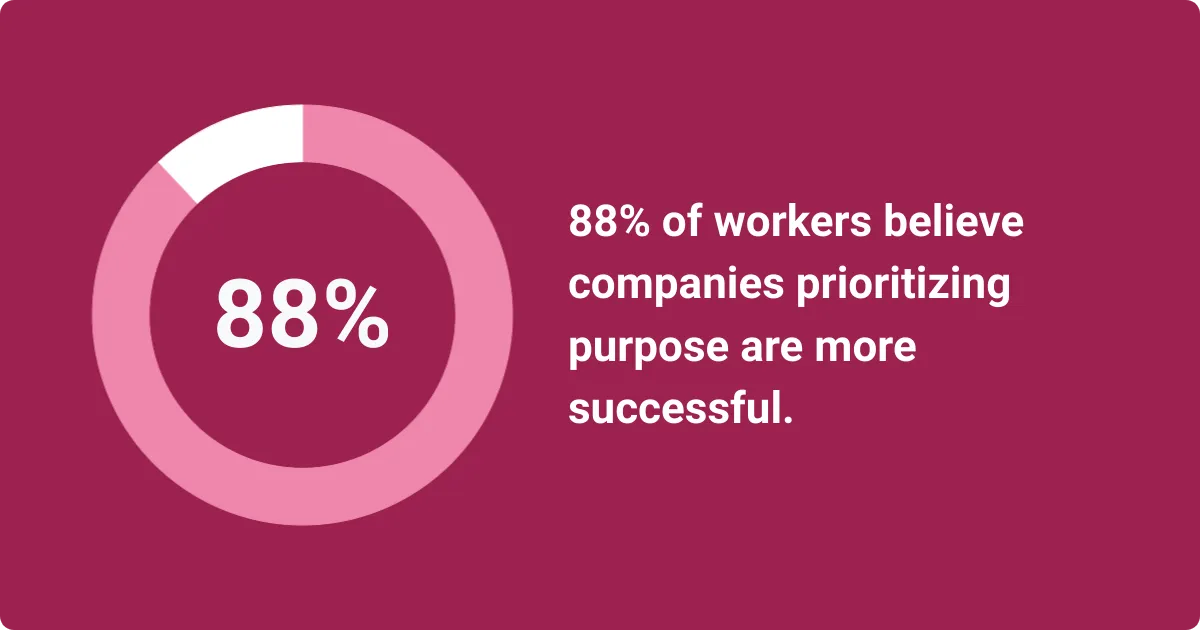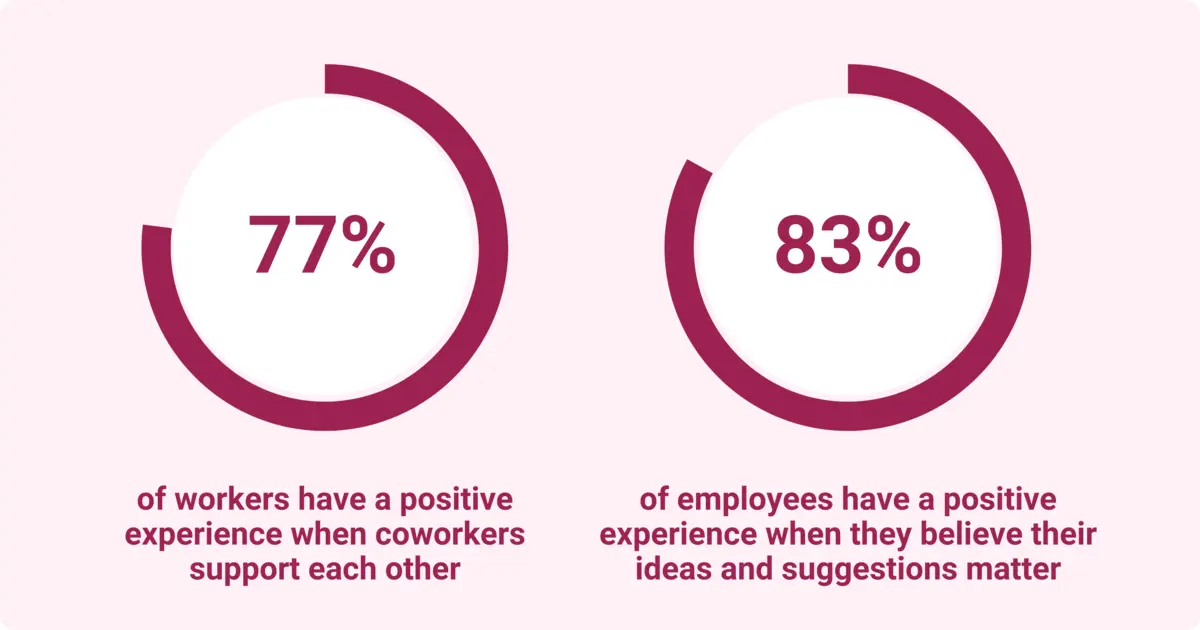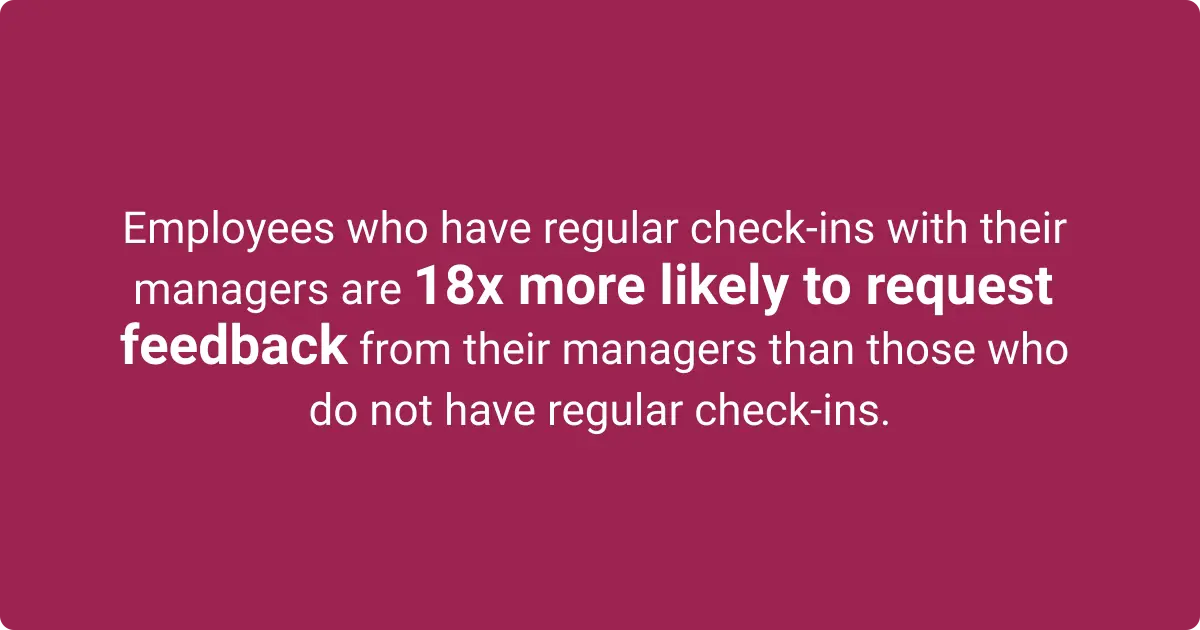The Ultimate Guide to Organizational Effectiveness: Strategies for a High-Performing Workplace
Table of contents
- Understanding organizational effectiveness
- Why organizational effectiveness matters
- Key factors that drive organizational effectiveness
- Approaches and models for measuring organizational effectiveness
- How to improve organizational effectiveness: Actionable strategies
- Building a continuously effective organization

In a perfect world, every organization would run as smoothly as a purring Volvo engine. Teams would work in harmony, with no hiccups or miscommunication. And projects? Always completed flawlessly and right on schedule.
Of course, reality is rarely so perfect. Even the top organizations don’t operate at peak operational efficiency 24/7. Many factors can impact a business’s effectiveness, which in turn affects everything from employee morale to productivity.
According to the Leets Consortium 2024 Annual Human Resources Survey, 64% of respondents pointed to organizational change as their biggest obstacle. And 30% cited team effectiveness as a significant challenge.
Understanding organizational effectiveness is key to addressing these issues. When senior leaders and HR professionals grasp this concept, they can spark real change. Drawing on Workhuman research, this article explains why boosting your organization’s efficiency matters. We’ll also share practical tips to help you supercharge your business’s effectiveness.
Understanding organizational effectiveness
At first, “organizational effectiveness” might sound like just another buzzword. You may wonder, “Isn’t that something every business already works on?” But it’s not just about getting tasks done efficiently. In a truly effective organization, every aspect works together to achieve big goals.
Here’s a closer look at this concept.
What is organizational effectiveness?
Organizational effectiveness refers to how well a business can reach its goals and deliver results. It’s about making the most of the resources at hand to get things done.
This can look different from one business to another. Take Apple, for example. In 2024, the Drucker Institute Company RankingOpens in a new tab named the tech firm the most effective company in America. The secret to its success? Every part of Apple — from its focus on collaboration to its discretionary leadership model — is geared toward innovation.
Deere & Company takes a much different approach. Coming in at #12 on the Drucker Institute list, this organization has one clear goal: to deliver genuine value to clients. It achieves this by offering top-notch customer support and creating cutting-edge agricultural equipment.
Effectiveness vs. efficiency
Don’t confuse organizational effectiveness with efficiency. You’ve probably heard both terms thrown around in meetings or thought leadership pieces, but they actually refer to two separate ideas.
Effectiveness is about using resources and strategies to accomplish your goals. It’s focused on doing the right things to drive organizational success.
By contrast, efficiency aims to get more done with fewer resources — time, money, or people. It helps you maximize productivity while cutting costs.
Let’s say you own a marketing agency and set an ambitious goal: doubling your client base. To get that kind of growth, you’ll need to significantly improve your effectiveness. How so? By using the right strategies to attract new customers. Maybe you’ll debut a new video marketing package to appeal to small businesses. Or you might create quirky TikTok videos to get the word out about your brand.
Of course, you probably don't want to spend a decade working towards your goal. That's where boosting efficiency comes in. For example, you could use artificial intelligence (AI) tools to brainstorm ideas instead of getting stumped by writer's block.
Or you might rely on automation tools to post your TikTok videos at just the right times. These strategies can save time so you can focus on building strong relationships with potential clients.
As this example demonstrates, effectiveness and efficiency often go hand-in-hand. When you work faster and smarter, you can accomplish your goals more effectively.
Why achieving organizational effectiveness is an ongoing journey, not a one-time fix
In many ways, improving organizational performance is like training for a marathon. If you only try quick fixes — like going for a few jogs before the big race or chugging energy drinks — you’ll never build the endurance you need to finish. Instead, successful marathon runners often change their lifestyles and train for many weeks.
True effectiveness requires the same dedication and careful planning. As a Bain & Company study on how to build efficient organizationsOpens in a new tab found, “Companies that have managed to break the cycle of recurring initiatives take a long-term approach” and “adopt a new mindset.” In other words, prepare to reshape your organizational work culture to become more effective.
Why organizational effectiveness matters
The idea of sweeping, long-term changes can send shivers down the spine of even the most experienced organizational leaders. You might be asking, “Is organizational effectiveness really worth it? After all, isn’t my business already achieving some of its goals?”
It’s a valid question. Here are a few reasons why all businesses should prioritize organizational effectiveness.
Drives higher performance and productivity
It’s no secret that effective organizations get more done. When all your employees share the same purpose, it’s easier for them to collaborate and stay on track. The result? Skyrocketing performance and productivity.
Employee recognition is one powerful way to improve effectiveness. For example, a Gallup-Workhuman study found that doubling the number of employees who feel recognized for their work can boost productivity by 9%. For a company with 10,000 employees, that can add up to an astonishing $92 million in new output.
Simply put, investing in effectiveness isn’t just about reaching abstract goals. It plays a crucial role in driving shareholder value by enhancing productivity and long-term business success.
Boosts employee engagement and retention
If you’ve ever worked at an ineffective organization, you know how much it can hurt morale. Poor management, lack of support, and constant delays put workers on a fast track to burnout.
It’s a much different story at effective organizations. These businesses give employees the support and recognition they need to thrive. They also foster a people-first company culture where individuals feel valued and satisfied.
According to Workhuman’s The State of Human Connection at Work report, building a strong sense of community and purpose reduces absenteeism and turnover. Even simple expressions of gratitude can go a long way. The report found that employees who were thanked in the last month are twice as likely to be highly engaged than people who don’t receive appreciation.
In short, effectiveness leads to more productivity and positivity — a winning combination in any organization.
Ensures long-term resilience and growth
There’s nothing more thrilling than a short-term win. But these victories don’t always lead to long-term success. For instance, just because a marketing strategy works once doesn’t mean it will continue to hook customers, especially if their interests change.
Organizational effectiveness prioritizes sustainable growth and resilience. Forget about instant gratification. This approach focuses on building a business that can adapt and thrive for many years — even in the face of significant challenges.
Highly effective organizations are agile, not static. They’re always searching for ways to improve and reach their goals. One of the best examples is Amazon, which constantly adapts its services to meet customer needs. In 2024, for instance, the retailer launched Dash Cart. This high-tech shopping cart is Amazon’s latest expansion into the grocery industry.
As Amazon reveals, embracing true effectiveness is key to long-term growth. According to the Bain & Company report, “Companies that embrace an efficiency mindset are four times more likely to say their cost efforts enabled growth rather than hindered it.” These organizations are also 4.5x more likely to improve their customer experience.
Improves customer satisfaction and stakeholder confidence
Employees aren’t the only people who benefit from organizational effectiveness. When your company runs smoothly, you provide better products and services. Effective teams also provide speedier customer support and create more innovative solutions. The result? More satisfied and loyal clients.
Effectiveness strengthens your relationship with stakeholders, too. Board members and investors will feel more confident when your organization consistently delivers results. As their trust grows, they may be more willing to continue investing in your business.
Key factors that drive organizational effectiveness
There’s no magic formula to achieve organizational effectiveness. If there were, every company would hit its goals effortlessly. Instead, think of this process like building a house — there are many ways to go about it, but you need the same basic components.
Ready to fire up your metaphorical power tools? Here are six must-have elements to help you construct a solid organizational development strategy.
Clear strategy and purpose
More than ever, employees want to work for companies with a strong mission — something that goes beyond just making money. According to Allison+Partner’s Purpose Under Pressure reportOpens in a new tab, 88% of workers believe companies prioritizing purpose are more successful. Additionally, 84% will only work for a purpose-driven organization.
Start by setting a clear direction for your organization and defining objectives. When your team understands exactly what they’re working toward — and why it matters — they’ll be more invested in your organizational success. Plus, they can make more effective, strategic decisions instead of relying on guesswork.

Patagonia excels in this regard. The outdoor retailer has a clear mission: “Protect our home planet.” It gears every part of its operations toward this goal. For example, the company specializes in creating high-quality products from recyclable and repairable materials. It also regularly donates to grassroots activist groups.
With such a strong purpose, it’s no surprise that Patagonia consistently ranks as a top workplace. In fact, 91% of Patagonia employees sayOpens in a new tab it’s a great place to work, compared to just 57% of workers at the average U.S. company.
Strong leadership and management
You wouldn’t build a house without skilled contractors and specialists. The same goes for businesses. Strong organizational leaders keep everything running smoothly and bring teams together with a clear vision.
Effectiveness is the name of the game for growth-minded leaders and managers. They make strategic decisions that fit the company’s goals and constantly look for ways to improve. For example, a sales manager might experiment with new customer relationship management (CRM) software to convert more leads.
The best leaders empower their employees, too. According to Gallup research, 70% of a worker’s engagement comes down to their immediate supervisor. Managers can help their teams thrive by providing regular feedback and support.
Even seemingly small gestures can have a huge impact on employee engagement. Do you have regular all-hands meetings? Consider kicking off each one by publicly recognizing a high-achieving team member. Or use a social recognition tool like Workhuman to reward employees.
Recognition only takes a few minutes, but it can make a huge difference in morale and even reduce turnover by up to 45%.
Talented, engaged people
At the end of the day, an organization is only as effective as the people driving it. High-performing businesses recruit the right talent and invest in their career growth.
Starbucks is one company that truly commits to employee development. Its Global Academy offers free online courses for employees, covering everything from business leadership to mindfulness. Plus, Starbucks covers 100% of tuition for employees earning an online bachelor’s degree. In return, it’s built a loyal workforce of educated and skilled employees — a worthwhile investment.
Of course, even the most talented employees won’t be much use if they’re disengaged. Effective organizations motivate workers by giving them feedback and recognizing their contributions. These efforts can pay off big time. According to Workhuman and Gallup’s The Human-Centered Workplace report, employees who receive meaningful feedback are five times as likely to feel engaged.
Healthy organizational culture
A good workplace culture can be the difference between your organization humming along smoothly or grinding to a halt. Top-performing businesses go the extra mile to create collaborative and trusting cultures. This positive environment helps employees feel connected and included.
A supportive culture can greatly impact your employees’ daily lives. The IBM/Workhuman Employer Experience Index Study found that 77% of workers have a positive experience when coworkers support each other. That’s not all. The study also discovered that 83% of employees have a positive experience when they believe their ideas and suggestions matter.
A healthy culture doesn’t just make employees feel good; it also boosts effectiveness. Satisfied employees tend to put in more effort and perform better.

Efficient processes and structure
It’s easy to focus on improving your team’s effectiveness, but don’t overlook the importance of your workflows. Like a house, an organization can quickly crumble if it has a weak foundation or uses clunky processes.
Start by analyzing your operations for inefficiencies and waste. For example, you might realize that your sales and marketing teams don’t share customer data. A centralized database could shatter this silo, allowing the teams to coordinate more effectively.
Flexibility is also key. Don’t be afraid to restructure roles or experiment with new processes if your old methods aren’t working.
Adequate resources and smart use of technology
Set yourself up for success with the right resources. Be sure to give your team the tools and talent they need to achieve organizational goals. That might mean reallocating funding and staff to high-priority projects.
Your organization also won’t reach its full potential without the right technology. Consider how different tools can help you increase efficiency and accomplish your objectives. Want to improve collaboration?
Try a communication platform like Slack or Teams. If you’re interested in data analytics, use Workhuman iQ for rich insights about your employees’ skills and interactions.
Workhuman iQ can transform your understanding of the employee experience with AI-powered social analytics to unlock data-driven strategy. It's the kind of intel you’ve always wanted, delivered in a way that anyone can use.
Approaches and models for measuring organizational effectiveness
There’s no one-size-fits-all approach to assessing your organization’s effectiveness. Business leaders and scholars have developed several models to help organizations monitor their progress. Here are some of the most common models and their pros and cons.
Goal attainment approach
The goal-attainment approach asks two simple questions: Did your organization achieve its goals, and if so, how effectively?
To answer these questions, you’ll need to identify and track relevant key performance indicators (KPIs). For example, if you want to improve sales, you could monitor revenue and conversion rates.
Strengths:
- Easy to understand
- Focused on outcomes
- Relies on quantitative metrics
Weaknesses:
- Doesn’t examine how goals are achieved, so it may overlook inefficiencies
Internal process approach
To truly understand your organization’s effectiveness, you need to study its internal processes. This model analyzes the business’s operations to uncover bottlenecks and inefficiencies. Common metrics include quality control and process efficiency.
Strengths:
- Can boost efficiency
- Provides detailed insights into organizational health
Weaknesses:
- Doesn’t consider external factors like market conditions
Resource-based (systems) approach
The systems approach evaluates how well an organization acquires and uses resources. In essence, it helps determine if you have the right building blocks for success. For instance, you might conduct a skill inventory to see if you have the necessary talent.
Strengths:
- Offers a big-picture view of your resources
- Future-oriented, which can lead to long-term success
Weaknesses:
- Having plenty of resources doesn’t always translate to success, especially if you squander them.
Strategic constituencies (stakeholder) approach
This model examines how effectively the business meets its stakeholders’ expectations. Are your employees and customers satisfied, or is there room for improvement? This approach relies on stakeholder feedback to answer these questions.
Strengths:
- Provides external measures of success
Weaknesses:
- Employees may feel hesitant to give honest answers
- Stakeholders may have conflicting needs
Competing values model
Organizations must balance different priorities and goals, which often conflict. The competing values approach (also known as the Quinn model) acknowledges this complexity by assessing effectiveness in four categories:
- Clan: Culture and collaboration
- Adhocracy: Innovation and flexibility
- Hierarchy: Processes and structures
- Market: Productivity and profitability
Strengths:
- Recognizes the complexities faced by real businesses
Weaknesses:
- More challenging and time-consuming than other models
Other frameworks and benchmarks
Practically speaking, many organizations use blended frameworks for measuring organizational effectiveness. One popular model is, McKinsey’s 7-S FrameworkOpens in a new tab which assesses:
- Shared values
- Style
- Skills
- Systems
- Structure
- Staff
- Strategy
You could also develop your own framework by mixing and matching relevant KPIs. This approach lets you tailor your metrics to your organization’s goals. For example, you could create a dashboard for measuring company culture with metrics like employee engagement and turnover rates.
How to improve organizational effectiveness: Actionable strategies
Now that you understand organizational effectiveness better, it's time to get to work. Use these step-by-step strategies to start making your business more effective.
Align around a clear mission, vision, and goals
According to a McKinsey survey on aligning the company purpose with employees' personal valuesOpens in a new tab, 44% of employees reported that their company’s purpose isn’t being put into action. Avoid this issue by clarifying your organization’s mission and strategic vision.
Get started by organizing a leadership workshop to refine your mission statement. Once you’ve perfected it, don’t just post it on your website and call it a day. Instead, take the time to distribute the mission across your company, and be sure to reference it frequently in internal communications.
You should also break the mission down into actionable goals within business units. That way, every employee will understand how their role contributes to the big picture.
Foster a culture of trust, recognition, and open communication
Building a positive workplace culture is vital when it comes to improving effectiveness. Employees who feel engaged and valued are more likely to buy into organizational changes.
Continuous feedback is one of the best ways to foster a supportive work environment. Employees who have frequent check-ins with their managers are 18 times more likely to request feedback. They’re also 2.5 times more likely to give feedback, building a culture of recognition.
Take the time to celebrate your team’s successes, too. Workhuman’s recognition platform makes it easy to acknowledge and reward employee achievements.

Empower and develop your people
Even the most talented employees can’t thrive without the right support. Empower your team by nurturing their professional growth and success. Trust us — this investment can lead to huge dividends, both in loyalty and performance.
Use skills assessments to identify gaps and develop personalized upskilling plans. For example, you might host intensive leadership training sessions for new managers. Or teach your marketing and sales teams about the wonders of automation. Employees may also appreciate mentorship programs and informal learning opportunities, such as “lunch and learn” workshops.
The benefits of continuous improvement through professional development go beyond leveling up your workforce. These opportunities demonstrate that you’re committed to your team’s success, boosting morale. And who knows? The right workshop might spark an exciting innovation for your company.
Streamline processes and workflows
You probably don’t need to create brand-new processes to improve organizational effectiveness. Instead, audit your existing workflows to find areas for improvement.
Look for places where you can update or simplify procedures. Are your team’s to-do lists overflowing with tedious tasks? Streamline their workflows with automation tools. Is too much bureaucracy stifling innovation? Cut the red tape and speed up decision-making. It’s all about improving organizational workforce agility to get more done.
Measure, monitor, and adapt
Don’t rely on your gut to tell you if your efforts are working. Set up a feedback loop and use KPIs to track your progress. For example, you could monitor your project's on-time rate to measure efficiency.
Compile these metrics in accessible dashboards with easy-to-understand data visualizations. Be sure to organize regular review sessions to go over your findings. These meetings let you celebrate successes and adjust course as needed.
Strengthen leadership commitment and accountability
Ultimately, improving organizational effectiveness requires a team effort. No single person or strategy can make a lasting difference, especially in large organizations. It’s like steering a cruise ship in a new direction — you need all hands on deck.
It all starts with the leadership team. Executives must champion organizational effectiveness and be willing to commit to it for the long term. They should also model the behaviors they expect to see from employees. For example, leaders might participate in training workshops and recognition programs. This engagement sends a clear message: We care about effectiveness, and you should, too.
Consider appointing a task force or a leader to oversee organizational effectiveness efforts. They should deliver regular updates about their progress and take responsibility for keeping projects on track.
Keep managers accountable, too. This might involve tying performance bonuses to team outcomes or requiring frequent progress reports.
Building a continuously effective organization
Let’s be honest: Organizational effectiveness isn’t a one-time fix—it’s an ongoing journey. You won’t see results overnight, but with the right approach, the long-term benefits are undeniable. Strong workforce planning ensures your team is aligned with your company’s goals, paving the way for sustained success.
By fostering a more human-centric workplace, you can drive employee engagement and stakeholder satisfaction, ultimately helping firms achieve greater efficiency and impact. The more your employees feel valued, the more motivated they’ll be to contribute to your organization’s success—bringing you closer to your desired outcomes.
Want to make recognition a core part of your organization? Contact our sales team to learn how our data-powered software can help.
Learn how the WorkhumanⓇ Platform can transform employee engagement in your organization.